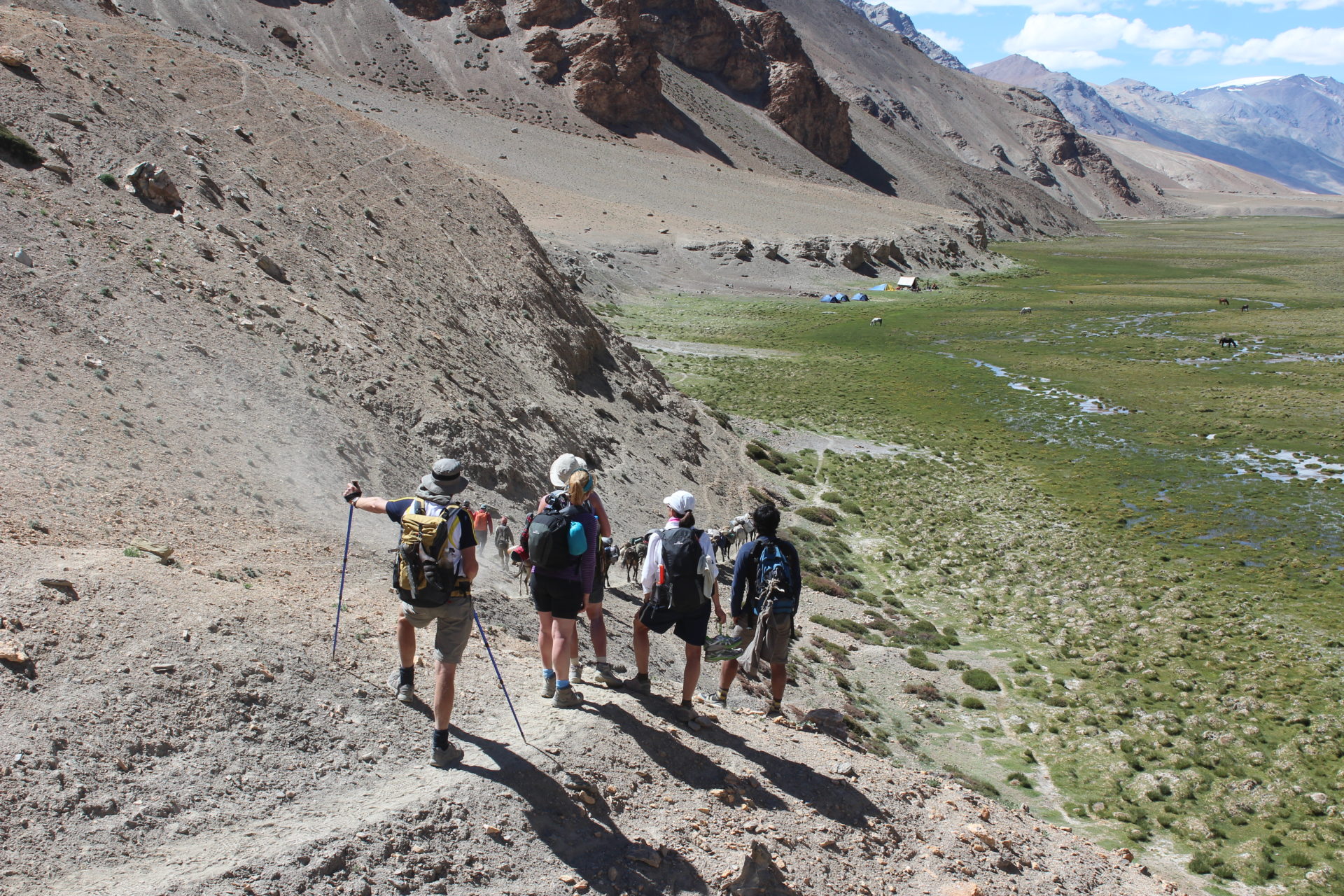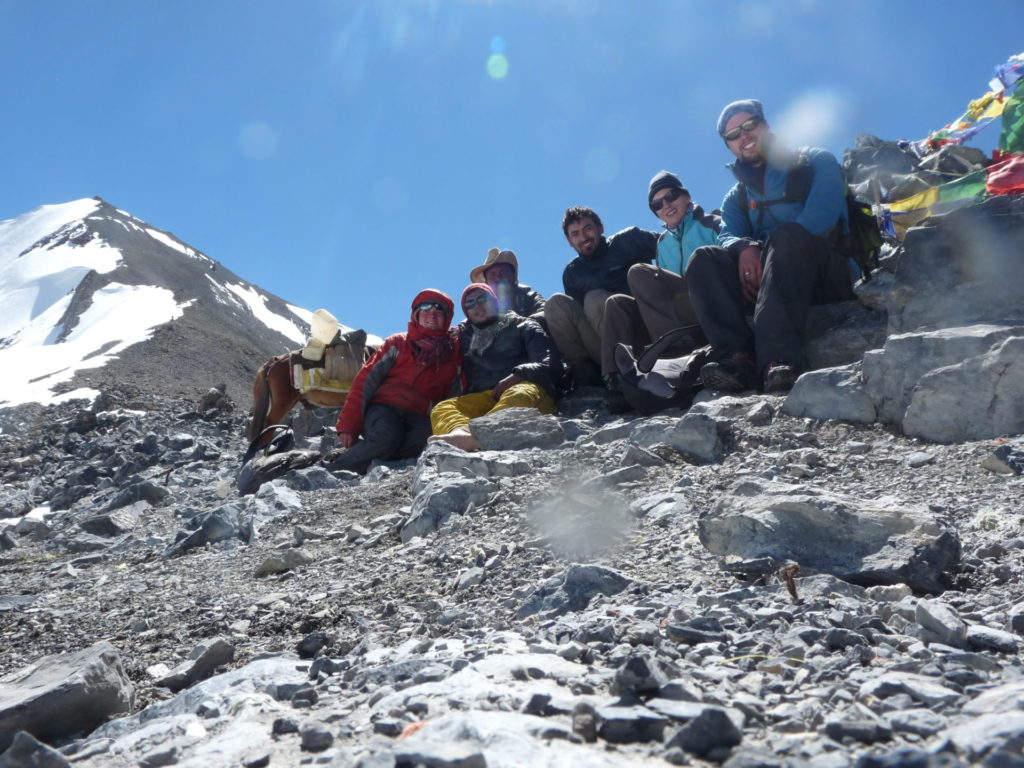



…. all this is trekking and are the main reasons why treks in the Himalayas inspire me so much! But the really unique thing about a trek are the special encounters with people.

And by that I don’t only mean the great cultural exchange with the various guests from all over the world, no, I write about the acquaintances with the people from the isolated regions of the Himalayas that we meet on the way or with whom we work together!
So on the present twelve-day trek from Rumtse in Ladakh to Kibber in the Spiti Valley we met a nomadic family. The family of four invited us to their warm tent on a snowy evening (snow in September). While the father prepared Momos from his own goat meat and the mother handed us hot butter tea, we played with the four-year-old daughter at the hot oven. Slowly it began to drip through the tent fabric, which made the mother a little nervous. We were happy to sit in the warm and marveled at the cozy furnishings of carpets, temples and pots. The father passes through the mountain desert of Ladakh every day with his four hundred goats and yaks. We took the chance to buy some fresh goat cheese and goat meat.
I was particularly impressed by the little daughter, who could play with our sweets forever without snacking on them.
These few hours were a great insight into the life of a nomadic family.
But even more beautiful was the cooperation with our Ladhakian horse man. For the first time, a horse guide from this region accompanied us. And although there were a few communication problems, we made a wonderful friendship.
He himself never seemed to have worked with a team from Manali, or at least never lived and cooked with them in the tent.
That’s what we did: together we prepared food, drank tea and did the work hand in hand.

He was very curious and often just stared at us long and interested, when we, for example brushed our teeth or read a book. He didn’t go to school and he doesn’t think highly about washing. He uses a small stick to brush his teeth. Even the face he would not wash with water, as this destroys the protective layer against sun and cold.
We didn’t bother, he didn’t seem dirty and he wasn’t stupid either.
In India, people adress each other with “brother” or “sister”, so he quickly became my “Acho” (Ladakhi brother) and I his “Didi” (Hindi for sister).

With three of his four children and his wife, he lives in a small village five hours from Leh. His nine-year-old son goes to a boarding school in Leh. The younger son was to go to a monastery as a monk, but he did not like it there, so he was brought home again. His eldest daughter is 12, his youngest child was born just 2 months ago. He also owns 40 Pashmina goats, from whose hair Pashmina clothes are woven.
We were lucky, that he had accompanied our trekking tour so late in the season, as there was a lot of work to be done at home to prepare for the winter (cutting grass) and at that time the Parang La Pass with the big glacier was a bit risky with horses, as it could snow anytime.

Nevertheless, he did not let his worries be noted, was always in a good mood and often helped us with lot’s of other work.
Of course, it was great for me that he also introduced us to the Ladakh cuisine!
he carried roasted barley flour along with him, also known as Tsampa. Mix it with warm milk and it will became a tasty and nutritious porridge. It tasted particularly good in tea with sugar and some butter.

Also delicious was his steamed Ladakhi bread, named Thigmo or the delicious noodle soup Thentuk!
Saying goodbye to him was not easy, but we are sure that we will see him again!





